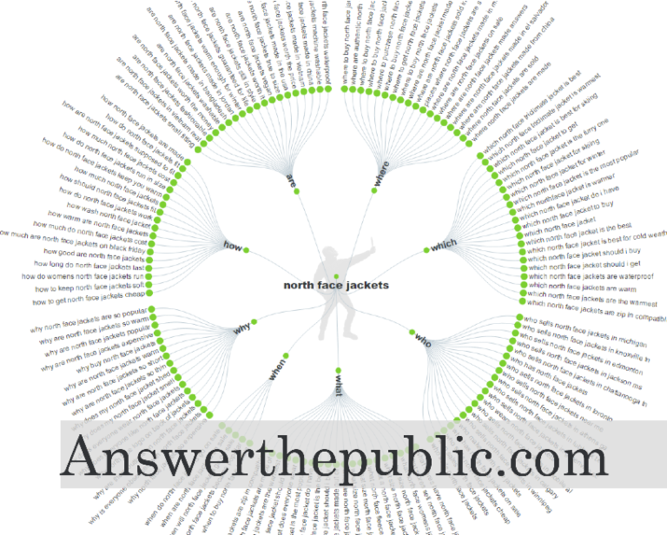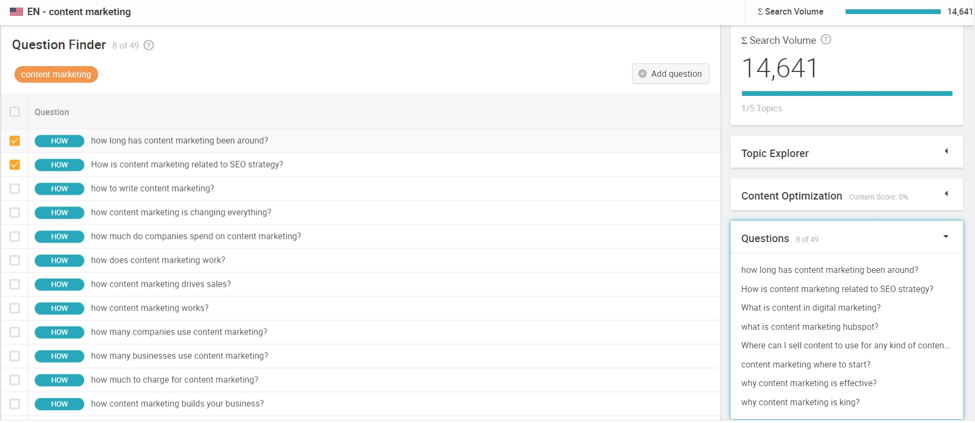 What’s the next best thing to having Google sit down next to you at your desk, gaze over its glasses at your screen, and tell you how to improve the visibility of your web pages? Listening to Searchmetrics founder Marcus Tober.
What’s the next best thing to having Google sit down next to you at your desk, gaze over its glasses at your screen, and tell you how to improve the visibility of your web pages? Listening to Searchmetrics founder Marcus Tober.
In his Intelligent Content Conference talk, Mastering the World of Deep Learning: How Big Data Is Making Content More Relevant in Search, Marcus shared some insights gleaned from years of studying search analytics across many industries and topics.
A pioneer in search-analytics software, Marcus has watched search engines get better and better at figuring out which web pages people will find relevant. He has seen search engines evolve from reading people’s text strings to practically reading their minds. Based on what he has learned from big data about SEO visibility, Marcus urges companies to do three things with their content:
- Develop a niche
- Get rid of redundant, outdated, trivial content (ROT)
- Update the remaining content to address people’s intentions
Marcus’s advice is not new, but he backs it up with data. His numbers reinforce the importance of doing these things that we all know we should be doing.
Though he isn’t sitting next to you, read on for what this European Search Personality of the Year has to say.
Develop your content niche
A sprawling general-interest website – a Goliath that produces tons of content about all kinds of topics – may see strong search visibility for a while, but that kind of performance may be knocked out by a smaller site that comes along and addresses people’s information needs in a more targeted way.
Take About.com, for example, a site that, as Marcus puts it, “invented mass scalable content online” in the mid-1990s. Over the decades, About.com has published millions of articles. At the time of Marcus’s talk, this site still had over a half-million pages indexed by Google. Yet, despite the site’s size, “in the last two years they lost almost all of their SEO visibility,” he says.

(SEO visibility – as shown in this chart – is a metric Marcus developed taking into account several relevant search factors to calculate how visible a website is in a search engine’s organic results, providing a single, universal index for measuring and comparing the online performance of different domains.)
Marcus wondered how the About.com visibility stacked up against a site specializing in one topic area. Because he likes cooking, Marcus singled out the recipe pages on About.com – the 17,000 or so pages with the word “recipe” in the title – and compared them with the much smaller site TheKitchn.com, which had 5,400 recipe pages.
In other words, he pitted an e-David against an e-Goliath.
He found that during the same two years (April 2015 to March 2017) that had seen the SEO visibility of About.com drop to nearly nothing, the SEO visibility of TheKitchn.com, with its focus on recipes and food-related health information, had grown by 53%.

Overlaying the two charts on the same SEO-visibility scale, Marcus found that, despite its relative lack of heft, the more specialized TheKitchn.com had overtaken About.com in terms of search performance.

Marcus says, “This means that if you specialize in something and make it really good because you understand the user, you can have great search performance” compared with a huge site that produces content about everything.
He points out that About.com has taken this reality to heart, spinning off specialized content brands with their own domains, such as ThoughtCo.com (lifelong learning), TheSpruce.com (homemaking), and TheBalance.com (money management). Each domain has its own set of subject-matter experts; and in each case, SEO visibility has taken off.
Find your content niche, and do that one thing well. “If you isolate what matters and then improve it, the user is going to be happier,” Marcus says.
For better #SEO visibility, isolate the content that matters, says @MarcusTober. Click To TweetGet rid of ROT
Big data analysis has also taught Marcus the importance of cleaning up the ROT (redundant, outdated, trivial content) on any website. “Think about your house. We’re all a bit messy and a bit lazy. Likewise, I can imagine that you have a lot of content that maybe you should get rid of or should merge with something else you have,” he says.
Allow plenty of time to get rid of old content – 12 to 18 months – to be sure you do not get rid of something that will likely bring in traffic, especially if you have seasonal traffic.
One company Marcus worked with provides information to seniors at Pflege.de, a German site similar to Care.com. The content team was afraid to get rid of old content because they didn’t want to lose all the internal links, and they thought some people might still want to see their old content.
When they finally weeded out the ROT, they found themselves getting rid of 95% of their content, leaving them with only 243 pages indexed in Google. Within months of doing this weeding, their SEO visibility had grown 240%.

“Removing old content can lead to awesome growth,” Marcus says.
Removing old #content can lead to awesome growth, says @MarcusTober. #SEO Click To TweetUpdate remaining content to address user intentions
Cleaning up your content includes not just getting rid of ROT but also updating the content you keep. “You have to make what’s left really good,” Marcus says.
What does he mean by content that’s “really good”? He means content that addresses people’s intentions – content that meets the information needs underlying the keywords and phrases they use.
Big data can help you do this. For example, Marcus points to the site called Answer the Public, which uses machine learning to create an on-the-fly visual of questions related to a given keyword phrase. (If you read this blog regularly, you may remember that Wil Reynolds also spoke highly of the Answer the Public site in his ICC talk.) This passage from that post shows questions people typed in search boxes about The North Face jackets.
Big data can help you update the #content you want to keep so it addresses user intentions, says @MarcusTober. Click To TweetClick to enlarge
Try it. Go to the Answer the Public site and type in a phrase. A dandelion of questions – real questions that people have typed into search boxes – instantly appears.
Use @answerthepublic to create on-the-fly visual of questions related to a given keyword phrase. @MarcusTober Click To TweetMarcus’s company Searchmetrics also provides sophisticated questions in its suite of services. The questions are cleaned and filtered so that writers can use them out of the box. Search volume also is shared for users to see the demand behind each topic.
Here is a screenshot with questions about “content marketing”:
Click to enlarge
If you want to know what people want to know, an intelligent search site like this can tell you.
Here’s how Marcus puts it:
When you understand what searchers really want, you can become super-successful, says @MarcusTober. #SEO Click To TweetWhen you understand the questions, the problems, the concerns – when you understand what the user really wants – you can become super-successful. You don’t have to be a well-known brand. Everyone can do this.
Conclusion
You probably already knew that you could improve your site’s SEO visibility by doing the things Marcus recommends: Develop a content niche, get rid of ROT, and update the remaining content to address people’s intentions. Sometimes, what you need isn’t the advice but the motivation. If that’s your situation, Marcus’s numbers may give you just the motivation you need.
What kind of big data is your team analyzing? What are you learning from your numbers?
Here’s an excerpt from Marcus’s talk:
Sign up for our weekly Content Strategy for Marketers e-newsletter, which features exclusive stories and insights from CMI Chief Content Adviser Robert Rose. If you’re like many other marketers we meet, you’ll come to look forward to reading his thoughts every Saturday.
Cover image by Joseph Kalinowski/Content Marketing Institute
Please note: All tools included in our blog posts are suggested by authors, not the CMI editorial team. No one post can provide all relevant tools in the space. Feel free to include additional tools in the comments (from your company or ones that you have used).



